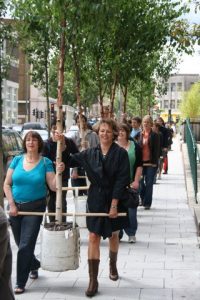Ken Yeang, the world-famous Malaysian architect complains that ‘Pursuing a kind of national architecture is a dilemma imposed by foreign architects’. He says that the Americans and Europeans can’t do it ‘Therefore, why should we define a national architecture, but these developed countries cannot?’. He is wrong. The architectural style known as International Modernism is really a North European style which just happens to be widely used in a context-insensitive manner.
For garden design and landscape architecture there is a far stronger case for a context-sensitive approach. Countries, regions and small localities have different geology, different climates, different hydrology, different flora, different fauna, different histories and, above all, different ways of using outdoor space. So why on earth should there be an International Style of Garden Design? The only possible excuses are the general lack of professional education in garden design and, in the case of landscape architecture, the general ignorance and lack of interest in design theory.
Curiously, the nearest thing to an agreed principle of landscape architecture is that ‘designers should consult the genius of the place’ (the genius loci). It is a great principle. But it has to be carefully considered and ‘though the genius must always be consulted she does not always have to be obeyed’. What most designers do is take a quick glance at the local character, find out a little about soils, find out some more about climate – and then do what they planned to do in the first place. The people should shout them down.






